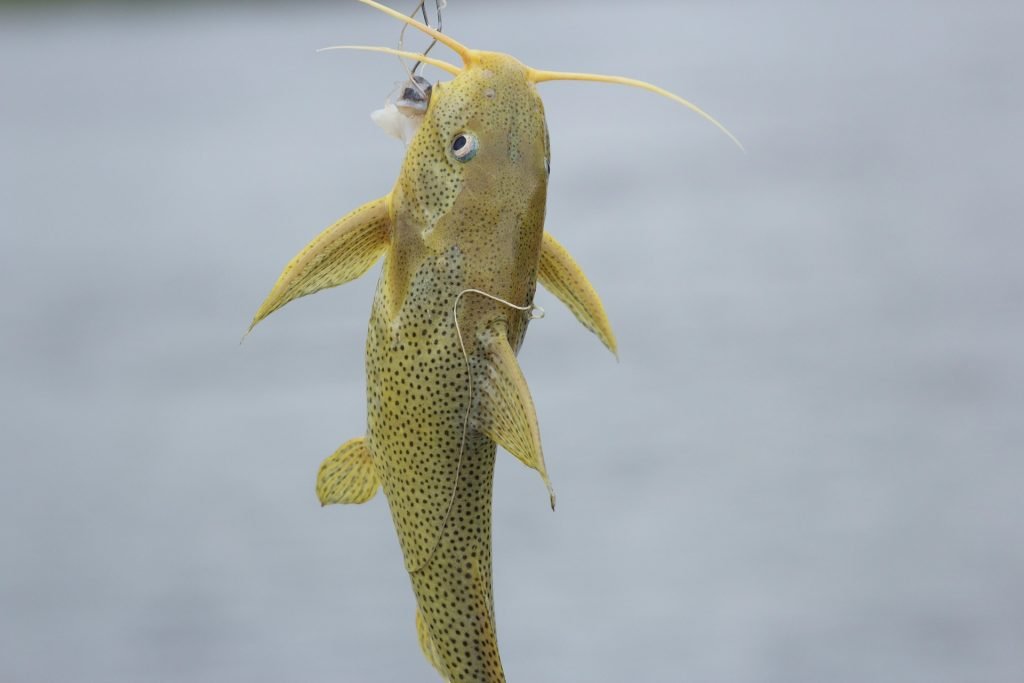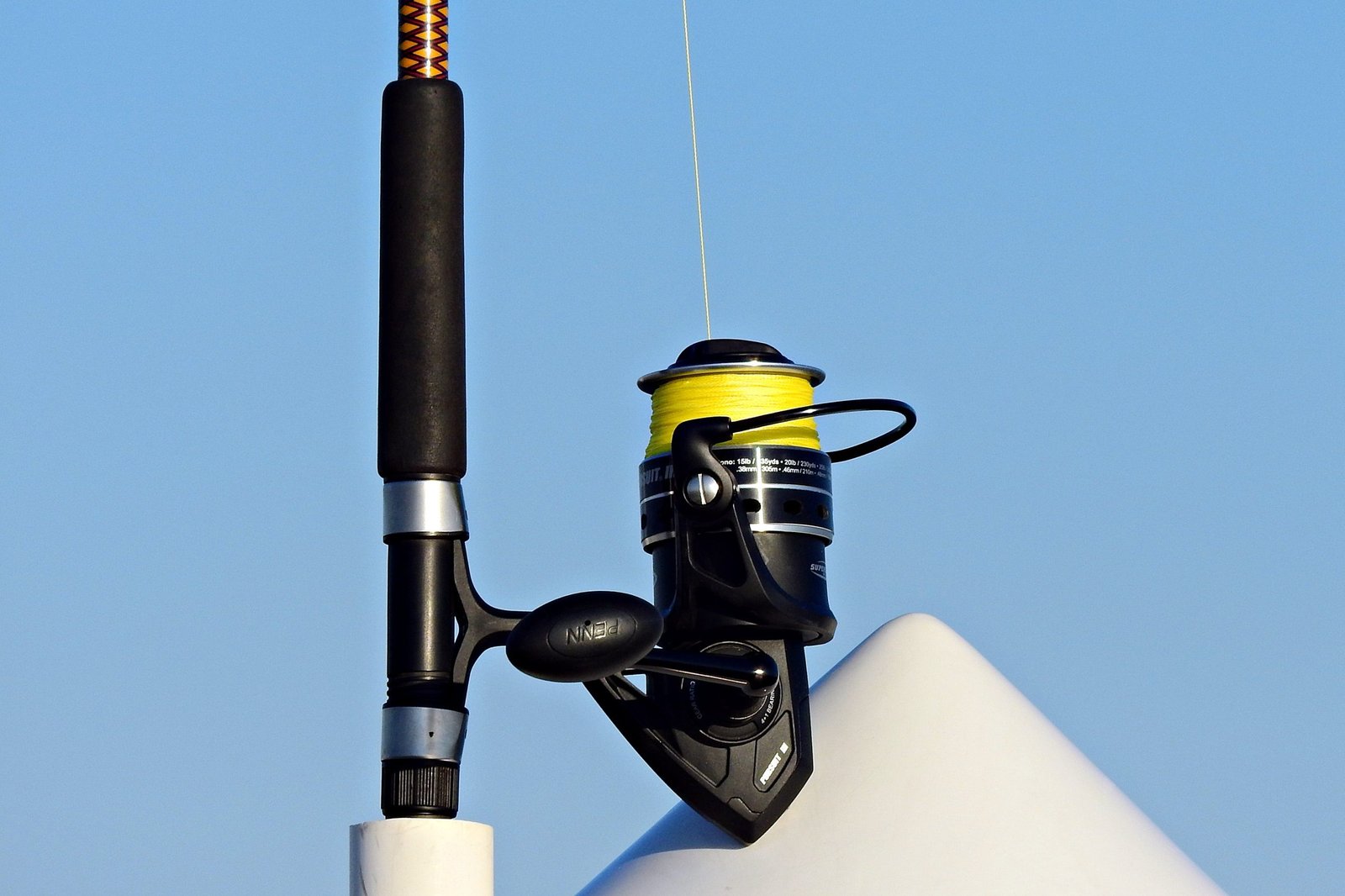
Catfishing is arguably one of the simplest types of fishing.
You don’t need too fancy of a gear, baits and rigs are simple, and you can catch them in pretty much every place around the US.
As you’re searching the internet for your catfish tackle, you’re certainly going to find a lot of conflicting ideas when it comes to lines.
Mono vs. Braid, clear line vs. bright line, thin vs. rope thick line, whether you can use fluorocarbon or not. These are the main questions that come to my mind when it comes to catfish lines.
Read on to get these answered once and for all.
Monofilament vs. Braid for Catfish
If you ever encountered an angler trying to convince you about how great and superior a specific type of line is, forget their advice already.
If there truly was a one-size-fits-all type of line, the other ones would probably not be sold anymore.
Monofilament for Catfish
So, how and when do you use monofilament? The straight answer is pretty much anywhere, with any tackle you want. When fishing for catfish around 20-25lbs, there is no reason to use braid over monofilament. When the catfish get real big, you can consider braided line.
This type of line is so much better when it comes to snags (rivers are full of them). Just my opinion, because it’s a two-faced problem. Monofilament breaks easier when pulling, but braid may also help break off some weak snags.
Its stretch also helps when fighting the fish. It makes the hook more mobile, thus decreasing the ability of catfish escaping.
Braided Line for Catfish
As mentioned above, I would recommend using braid for bigger catfish. But it’s not necessary by any means.
Braided line has a smaller diameter compared to monofilament of the same strength. This means you can spool more line onto your reel, which is beneficial for long-distance casting and fighting big fish.
It also has better abrasion resistance than monofilament, thus lasting longer and being better suited for harsh waters.
Price is something that I must mention too. Braid is significantly more expensive than monofilament.
Braid is more visible in the water, but it’s not something worth talking in catfishing.
Highly Regarded Lines Over the Years
For those wondering about specific models of line, I have to tell you that you can use almost any brand. In any case, here are some angler-favorite lines over the years.
Braided Lines for Catfish
SpiderWire Stealth Braid
))/2642636.json)
Review: This line is well-regarded for its strength and smooth casting. Anglers appreciate its low visibility in the water and excellent abrasion resistance, which is crucial when fishing in areas with heavy cover where catfish are often found.
See it on:
PowerPro Spectra Fiber
))/1464626.json)
Review: Known for its durability and minimal stretch, PowerPro Spectra Fiber provides superior sensitivity and hook-setting power. It has a high strength-to-diameter ratio, allowing you to spool more line on your reels, which is beneficial for targeting large catfish.
See price at:
KastKing SuperPower Braid
Review: This braided line is praised for its high tensile strength and low stretch, offering excellent sensitivity and control. It’s also known for its affordability and durability, making it a popular choice among catfish anglers.
See price on:
Monofilament Lines for Catfish
Berkley Trilene Big Game
Review: Berkley Trilene Big Game is favored for its strength and shock resistance. It offers excellent knot strength and abrasion resistance, making it ideal for battling large catfish. Its affordability and reliability make it a top choice among many anglers.
See it on:
Ande Monofilament Line
Review: Known for its toughness and durability, Ande Monofilament Line is popular among catfish anglers who fish in rocky areas. It provides good knot strength and abrasion resistance, ensuring it can handle the rigors of catfishing.
See price on:
Stren Original
Review: Stren Original is celebrated for its balance of strength and flexibility. It offers reliable knot strength and low memory, which helps reduce line twists and tangles. Its versatility makes it a reliable warrior since 1958.
See price on:
Fluorocarbon: Why Isn’t It Used as Much?
While fluorocarbon fishing line has its advantages, it’s not as commonly used for catfishing compared to braided and monofilament lines. Here are some reasons why:
-
- Visibility and Application: Fluorocarbon is prized for its low visibility underwater, making it an excellent choice for clear water and line-shy fish. However, catfish are generally not considered line-shy and are often found in murky or heavily covered waters where line visibility is less of a concern. This diminishes one of the key advantages of fluorocarbon in catfishing scenarios.
-
- Cost: Fluorocarbon tends to be more expensive than both monofilament and braided lines. Given that catfishing often involves fishing in tough environments where lines can get damaged or lost, the cost-effectiveness of fluorocarbon becomes a significant drawback.
-
- Abrasion Resistance: While fluorocarbon does offer good abrasion resistance, braided lines are generally superior in this regard. Catfish often inhabit areas with rocks, logs, and other debris that can wear down a line. Anglers typically prefer the enhanced durability of braided lines in these environments.
-
- Handling and Memory: Fluorocarbon lines can have higher memory compared to braided lines, leading to issues with line twists and tangles. This can be problematic when casting and retrieving, especially in the demanding conditions often encountered in catfishing.
-
- Stretch: Fluorocarbon has less stretch than monofilament but more than braided lines. This middle ground can be less desirable for catfish anglers who either prefer the high sensitivity and minimal stretch of braided lines or the shock-absorbing stretch of monofilament
Frequently Asked Questions
What is the ideal pound test line for catching catfish?
The ideal pound test line for catching catfish depends on the size and species of the catfish you are targeting. As a general rule of thumb, a 20-40 lb test line is suitable for most catfish species. However, if you are targeting larger catfish, you may need to use a heavier line. It’s always a good idea to check the fishing regulations in your area to ensure you are using the appropriate pound test line.
How should I set up my line for catfishing effectively?
When setting up your line for catfishing, it’s important to use a strong and durable line. Monofilament line is a popular choice for catfishing as it has good strength and is relatively inexpensive. When setting up your line, use a sinker to keep your bait on the bottom of the water. You can also use a bobber to keep your bait at a specific depth. When using live bait, be sure to use a hook that is appropriate for the size of the bait.
Which type of line is recommended for use with spinning reels when targeting catfish?
When targeting catfish with a spinning reel, a braided line is recommended. Braided lines have a smaller diameter than monofilament lines of the same strength, which allows for longer casts and better sensitivity. Braided lines also have excellent strength and durability, making them a great choice for catching catfish.
What are the advantages of using monofilament line for catfishing?
Monofilament line has several advantages when it comes to catfishing. It is relatively inexpensive, making it a great choice for anglers on a budget. Monofilament line also has good strength and is easy to handle. Additionally, monofilament line has some stretch, which can help prevent your line from breaking when fighting a large catfish.
Can you suggest the best line to use with a baitcaster for catfish?
When using a baitcaster for catfishing, a braided line is recommended. Braided lines have excellent strength and sensitivity, which allows you to feel even the slightest bite. Braided lines also have a smaller diameter than monofilament lines of the same strength, which allows for longer casts and better accuracy.
What are the benefits of using braided line over monofilament for catfishing?
Braided line has several benefits over monofilament when it comes to catfishing. Braided line has excellent strength and sensitivity, which allows you to feel even the slightest bite. Braided line also has a smaller diameter than monofilament lines of the same strength, which allows for longer casts and better accuracy. Additionally, braided line has virtually no stretch, which can help you set the hook more quickly and effectively.

))/422844.json?hei=600&wid=600&$Soc_facebook$)
))/260861.json?hei=600&wid=600&$Soc_facebook$)
))/3284507.json)



